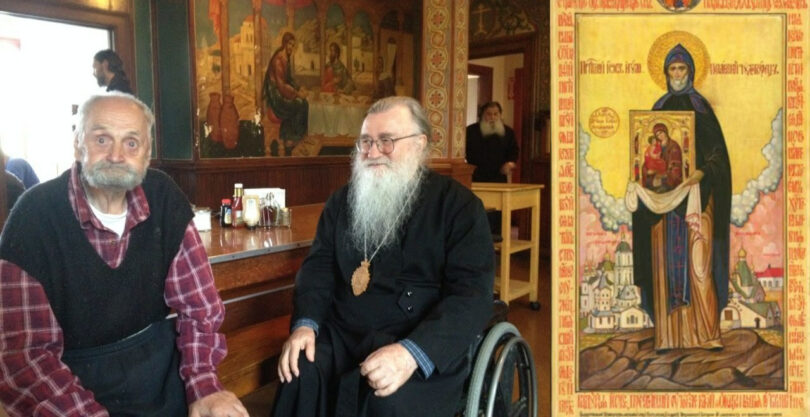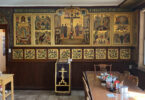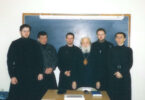Archbishop Alipii Gamanovich of Chicago and Mid-West was born on this day in 1926.
The monastery in Ladomirová existed only for twenty years, but the impact it made is hard to measure. The story of Archbishop Alipii belongs to the story of the Ladomirová brotherhood outside of Ladomirová itself.
Nikolai Gamanovich grew up in the Kherson region of Ukraine in a smith family, and received his elementary school and secondary education there. During World War II, he was taken captive by the German occupying forces to work in Germany. This is where he initially crossed paths with the St. Job of Pochaev Brotherhood.
After leaving Ladomirová in East Slovakia in June of 1944, the Brotherhood made its way from Bratislava to Berlin, where it became a kind of traveling monastery under General Andrei A. Vlasov, Chairman of the German-organized Committee for the Liberation of the Peoples of Russia. Following the 1943 ROCOR Bishops’ Conference in Vienna, the Russian Church Abroad was accorded the right by authorities of the Third Reich to minister to forced laborers (Ostarbeiter) from the Soviet Union. Nikolai Gamanovich was permitted to attend church and then return to his camp. In the cathedral in Berlin, he met the monks from Ladomirová. On February 3, 1945, Nikolai left with the monks for Bavaria. After the end of the war, the brethren moved to Geneva.
While in Geneva, Nikolai already showed his talents while studying iconography under Archimandrite Kiprian (Pyzhov). Therefore, it is not a surprise that upon being tonsured as a rassophore in Geneva, Nikolai received the monastic name Alipii after the famous iconographer of the Kiev Caves Lavra. On December 1, 1946, the monks arrived at Holy Trinity Monastery in Jordanville, NY. This is where Fr. Alipii developed many of his talents. After World War II, Holy Trinity was the largest Russian monastery outside of the USSR. Jordanville had more monks than New Valaam in Finland or St. Panteliemon Monastery on Mount Athos until it was reinforced with the brethren sent from Russia in the mid-1960s.
The newly founded seminary at Holy Trinity Monastery in Jordanville needed suitable textbooks for a new generation of students. Fr. Alipii (he was tonsured in 1949 together with the future Archimandrite Flor and Metropolitan Lavr) wrote a Church Slavonic textbook, which has been used since then both in the homeland and in the diaspora. As an iconographer, Archbishop Alipii was a disciple of Archimandrite Kiprian. He developed his own style and his style of decorative text stood out for its quality. In terms of the variety of his skills, Archbishop Alipii comes close to Bishop Daniel (Alexandrov), the ROCOR polymath from the World War II-era diaspora.











